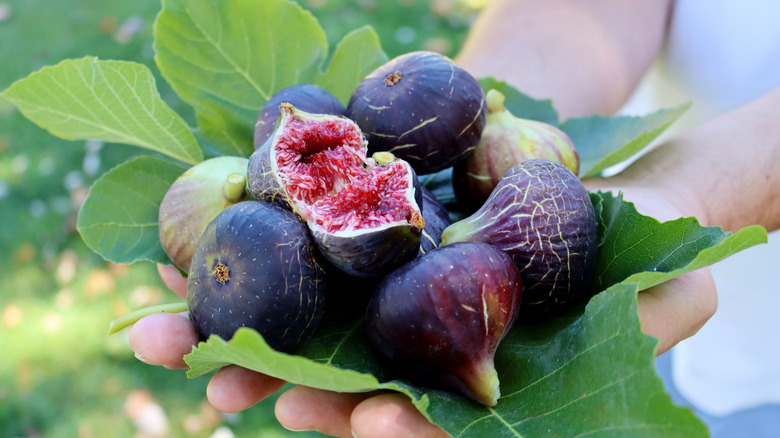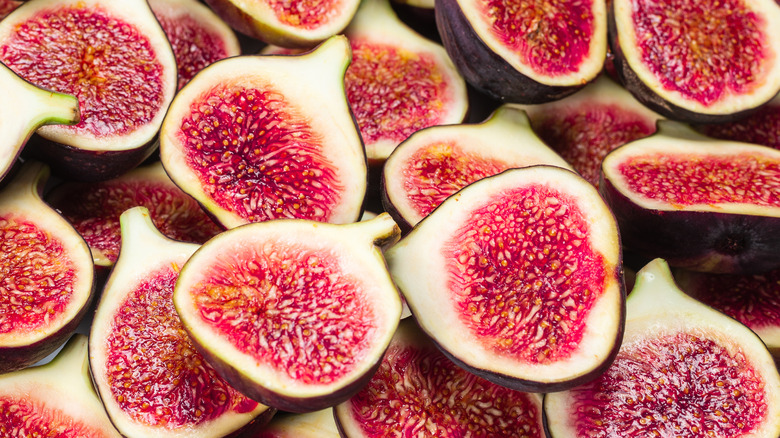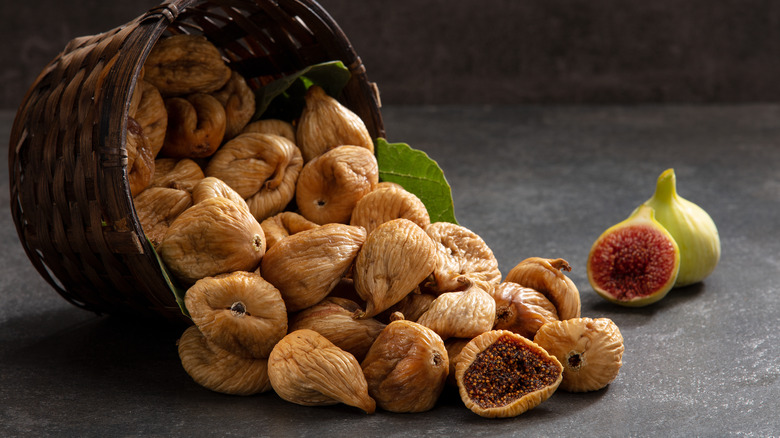Fresh Figs Vs. Dried: Is There A Nutritional Difference?
Figs seem to be a sweet snack that everyone is fond of, but no one ever has on hand. Notice we did not call them a fruit, because technically, figs are a flower, per HuffPost. According to Harold McGee's "On Food and Cooking" (via Myrecipes), figs are 80% water, making their shelf life very short. That's why large amounts of figs are dried in order to preserve them and make them easier to handle. In fact, 90% of harvested figs are dried in order to preserve their flavor, according to Ayoub's Dried Fruits & Nuts.
If you want to experience a fresh fig or you've found a recipe that's just begging for them, MasterClass recommends using them within a few days, or they can last up to a week when you keep them in the fridge. Because of this short window, dried figs are far more plentiful than their hydrated counterparts and are much easier to get a hold of as well. Figs' soft and aromatic sweetness is delicious fresh or dried, but nutritionally there is a slight difference between fresh and dried figs.
Health benefits of fresh figs
Fresh figs are a low-calorie, high-nutrient sweet snack, according to Healthline. On average, one fresh fig has about 30 to 40 calories, per Web MD, so enjoying a few of them to quell your sugar cravings is highly encouraged. Fresh figs are recommended as a snack over candies, dried fruit, and other sweets because they can satisfy your sweet tooth without all of the added sugars. Adding figs to your snack roster will also provide you with a lot of vital nutrients like vitamins A, C, B6, copper, potassium, and more.
One fresh fig has slightly more calories than a dried fig, but this is due to the added water content and variety of vitamins and minerals present in the fruit, all of which are typically worth the few extra calories, per SFGate. Eating a fresh fig will also make you feel more full than a dried fig.
How do dried figs compare?
As opposed to fresh, dried figs are inherently devoid of water content and slightly lower in their vitamin content, according to SFGate. Because their sugar content is more concentrated, dried figs are more calorie-rich and sugar-rich by weight when compared to fresh figs, per Healthline.
If you're counting calories and tracking your macronutrients, fresh figs are going to be your best bet at a slightly healthier diet, but both dried and fresh figs can have some very beneficial effects, per WebMD. Figs are well known for their ability to aid in digestion and are frequently used as a natural remedy for things like constipation and indigestion. The reason this works is because figs are high in fiber, which promotes healthy digestion and by extension healthy bowel movements. So, while there are some notable differences to remember when picking out fresh figs or opting for dried ones, you can rest easy knowing that either way, you'll have a satisfied sweet tooth and a steady stomach.


